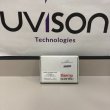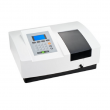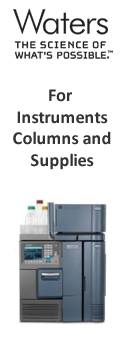Description : Recombinant Human EphB4-Fc Chimera Catalog#: Quantity Lot# EB1004-50 50 μg 0706 EB1004-200 200 μg 0706 Source: Extracellular domain of human EphB4 (residues 16-537) was fused to the carboxy-terminal Fc region of human IgG1 and expressed in CHO-k1 cells. Formulation: Lyophilized powder lyophilized from phosphate-buffered saline (PBS) Preservative: None. Purity: >97% on 15% SDS-PAGE. Sterility: 0.2 μm membrane-filtered and packaged aseptically. QC Tests: SDS-PAGE, Immunoprecipitation, direct ELISA, Western blot Reconstitution and Use: Reconstitute the contents of the vial using sterile phosphate-buffered saline (PBS) to a concentration no less than 100 μg/ml and aliquot for future use. (If the initial rehydration is too dilute, activity may be lost due to the non-specific adsorption to the container). The solution can then be further diluted to a working stock solution. Storage and Stability: Upon receiving, store the product at -20°C. After reconstitution, store the working aliquots at 2-8°C for no more than 3 months. For extended storage, aliquot the rehydrated solution (100 μg/ml) and freeze at -70°C or -20°C. Avoid repeated freezing and thawing. More dilute solutions stored at -20°C will lose activity faster. Activity: Measured by binding to recombinant soluble human ligand EphrinB2 in a functional ELISA. About EphB4: EphB4, also known as Htk, Myk1, Tyro11 and Mdk2, is a receptor tyrosine kinase that binds the ligand Ephrin B2, but not other Ephrin ligands. It has been shown to be involved in the regulation of endothelial cells, carcinomas and some hematopoietic cells. It plays important roles during embryonic development including pattern formation, cell aggregation and migration, segmentation, neural development, angiogenesis, and vascular network assembly. It is essential for vascular remodeling, maturation and directed growth. Its expression is restricted to venous endothelial cells. Applications: This protein has been tested for Immunoprecipitation, ELISA, Western blot with monoclonal antibodies (AB105, AB107), and EphrinB2 ligand binding. Review Papers Holder N, Klein R. Eph receptors and ephrins: effectors of morphogenesis. Development 1999;126:2033-2044. Dodelet VC, Pasquale EB. Eph receptors and ephrin ligands: embryogenesis to tumorigenesis.Oncogene. 2000; 19(49):5614-5619. Pasquale EB. Eph-ephrin bidirectional signaling in physiology and disease. Cell. 2008; 133(1):38-52.
- Model: EB1004-50
- Manufactured by: Biomiga


















